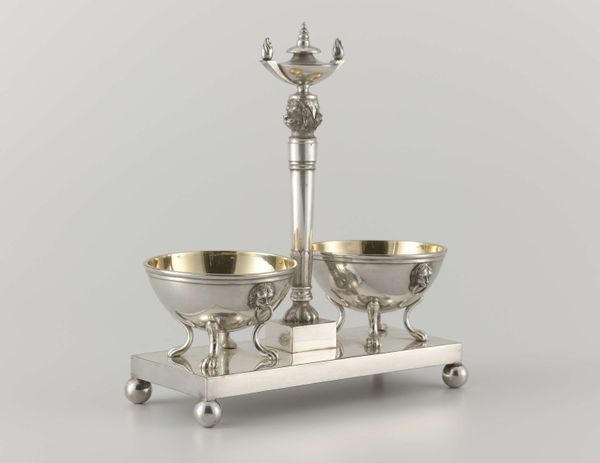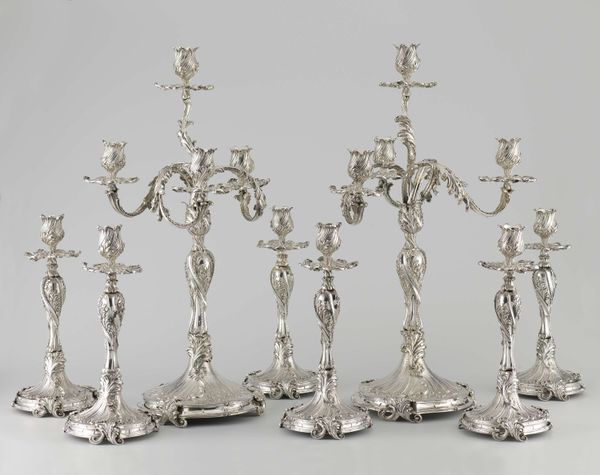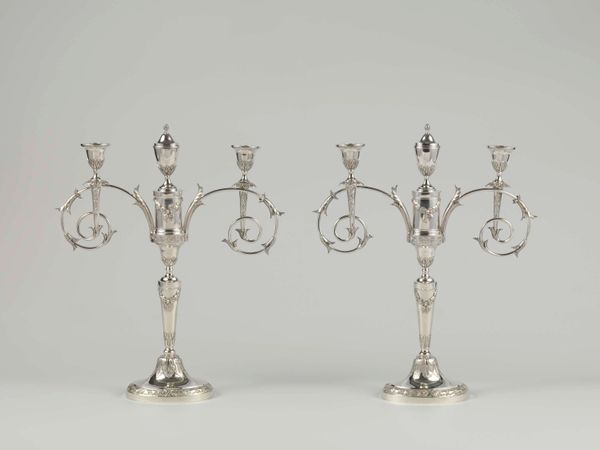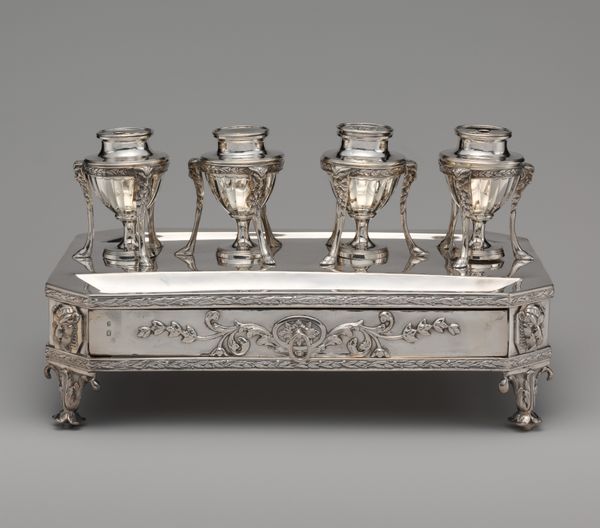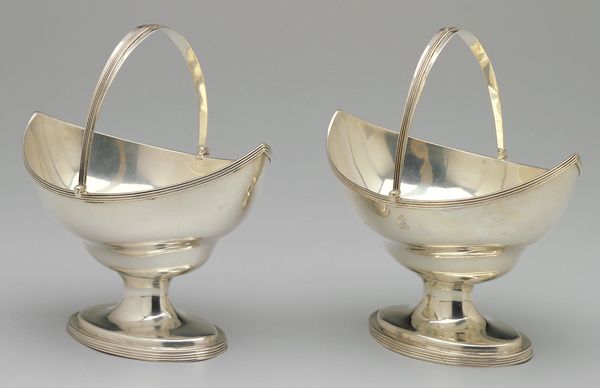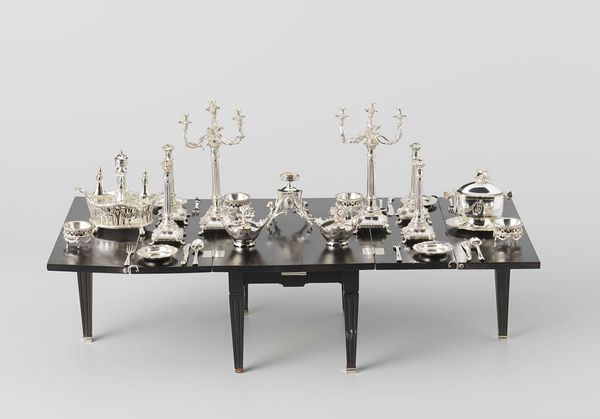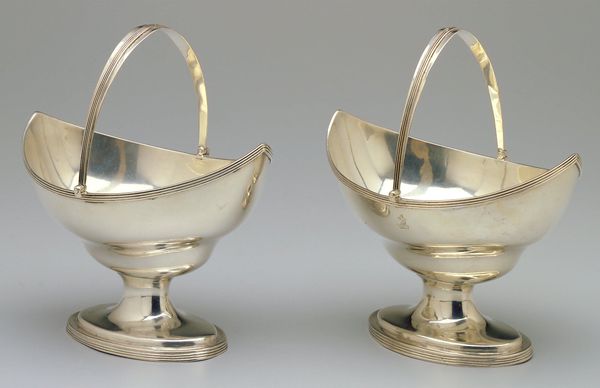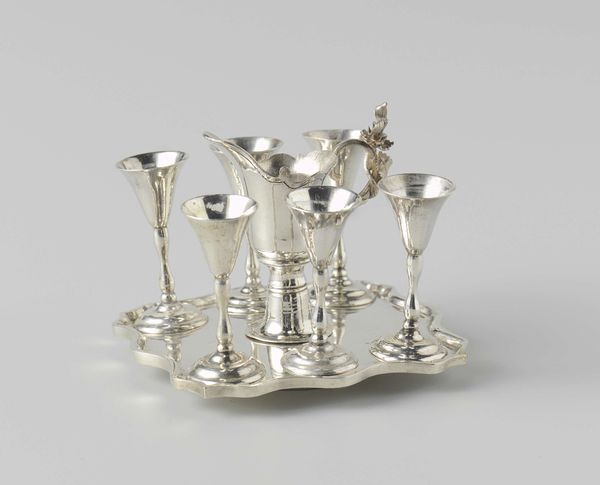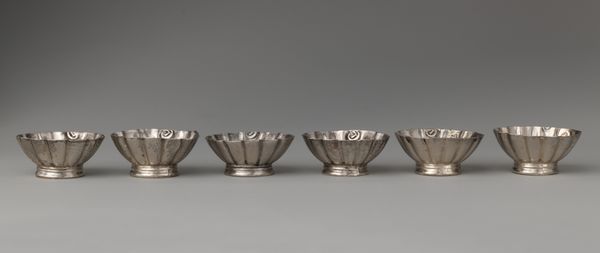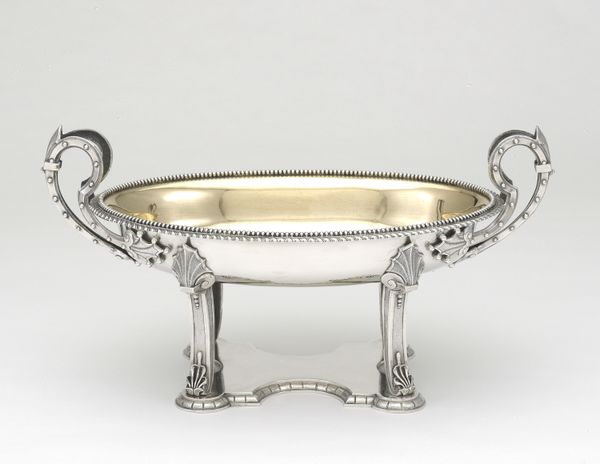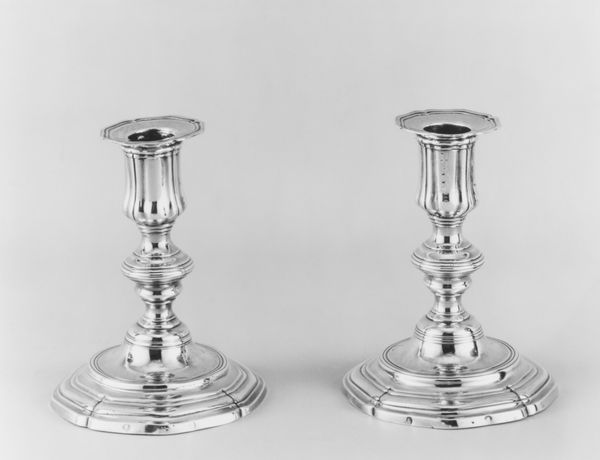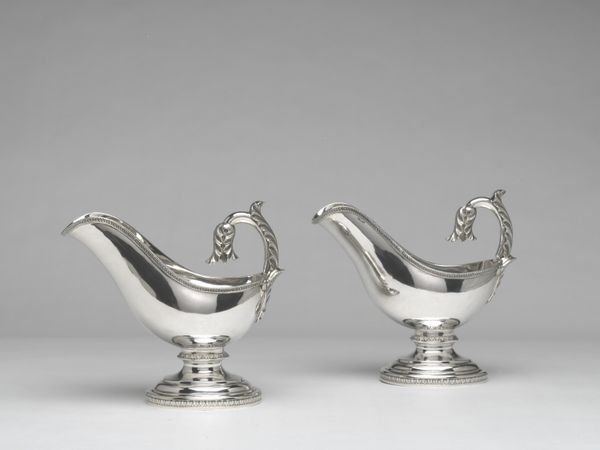
Dimensions: height 15.8 cm, width 14.3 cm, length 6.3 cm, weight 344 gr
Copyright: Rijks Museum: Open Domain
Curator: This gleaming piece before us is a silver salt cellar created in 1804 by Francois Marcus Simons. Its Baroque influences are unmistakable. Editor: It’s so pristine. Almost aggressively… decorative? Like a table setting engineered for intimidation. The repetition emphasizes this sense of formality, but it feels fragile. Curator: Absolutely. This was created during a period of intense political and social upheaval in Europe. The French Revolution was still a recent memory, and the Napoleonic Wars were raging. The presence of such elaborate tableware highlights the power dynamics present at dinner, suggesting this was reserved for the most important or politically powerful events. Editor: Do you think that’s also conveyed in its symmetry? Each piece perfectly mirrored and spaced... Everything so deliberate and contained. There's even something inherently colonial about this type of excessive display when considering global trade at the time. What does the use of silver extracted at the expense of indigenous communities symbolize in this setting? Curator: Indeed. Luxury goods like these were directly tied to colonial exploitation, where silver became a commodity representing power and global reach for European nations. The table, in effect, became a stage for displaying wealth acquired through exploitative means. Even the baroque aesthetic plays a role; it projects a self-assured opulence rooted in dominance. The salt, though practically essential, became elevated and politicized in these spaces. Editor: So, the dining space transformed into a theater where one’s social capital and worldview were visually confirmed. In these circumstances, enjoying a meal isn't solely about pleasure but actively reinforces social hierarchy through visual displays. Curator: Exactly, from a social history perspective, it prompts questions regarding access, privilege, and the performative nature of wealth in maintaining certain socio-political structures of the time. Editor: Food becomes a loaded element then, more than sustenance; a visual confirmation of your place within the prevailing power structure. I am reminded that the aesthetics and traditions surrounding dining have continuously played an important part in communicating who possesses power within any given situation. Curator: Precisely. The Baroque style itself served to project a potent image, its inherent flamboyance not only enhancing a dining experience but also, in fact, functioning as a potent visual reminder of dominance, reinforcing the structures of power embedded within 19th-century colonial society.
Comments
No comments
Be the first to comment and join the conversation on the ultimate creative platform.
